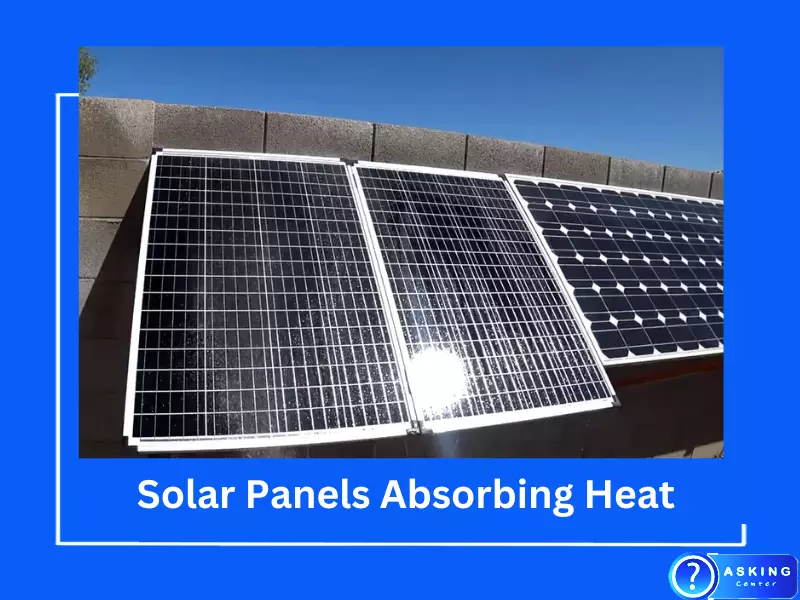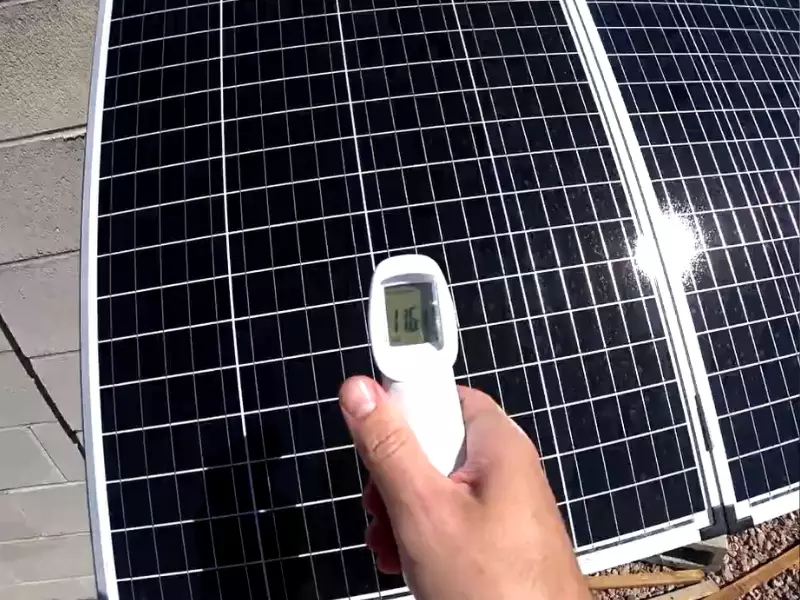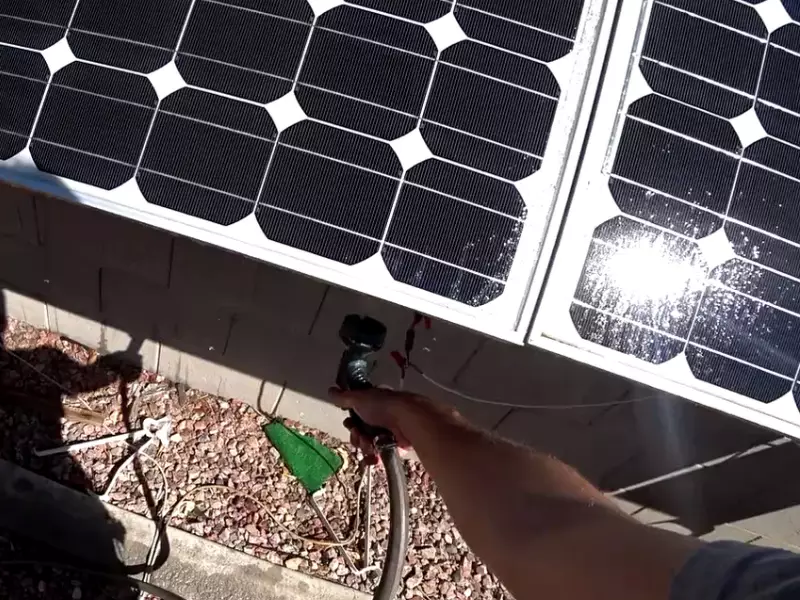Solar energy has gained enormous popularity as a clean, renewable energy source over the past few decades. Its efficacy hinges on solar panels, innovative devices designed to capture sunlight and transform it into electricity.
Intriguingly, in addition to sunlight, solar panels also absorb heat. This characteristic gives rise to a unique set of benefits and challenges that warrant comprehensive exploration.
Our discussion will extensively delve into the mechanics behind solar panels absorbing heat and the resulting effects on their efficiency and overall performance. Moreover, we will explore the economic implications and the environmental footprint of this technology.
Equipped with a profound understanding of the intricacies of solar energy, you will be empowered to make informed decisions regarding the implementation of solar panels.
How Do Solar Panels Work?
At the heart of solar energy conversion is the photovoltaic effect, a process in which solar panels generate electricity. These panels house photovoltaic cells that absorb sunlight. The cells contain semiconducting materials, primarily silicon, which generate electric current when exposed to light.

However, it’s important to highlight that the efficiency of these panels isn’t uniform throughout the day. As sunlight intensity changes, so does the power output. On a sunny day, the energy yield is highest around noon when the sun is at its peak. During this time, panels absorb the maximum amount of solar energy, subsequently producing the most electricity.
Do Solar Panels Absorb Heat?
Yes, solar panels absorb heat. However, this process is distinct from light absorption. The absorbed light directly contributes to the generation of electricity. On the other hand, heat absorption impacts the operating temperature of the panel, which, in turn, influences its overall efficiency.
It’s important to note that while solar panels are designed to withstand high temperatures, excessive heat can cause a decrease in performance. This phenomenon, known as the temperature coefficient, explains the slight drop in output for every degree above a certain threshold (usually around 25°C or 77°F).
Pros of Solar Panels Absorbing Heat
The heat absorption characteristic of solar panels offers a myriad of benefits, from environmental sustainability to economic gains. This section delves into these advantages in detail.
Promoting Renewable Energy
Solar panels play a crucial role in utilizing the sun’s energy, an abundant and renewable resource. By absorbing heat and light, solar panels directly convert solar energy into electricity, reducing reliance on fossil fuels and contributing to environmental sustainability.
Increasing Energy Independence
Having a solar energy system at home enables homeowners to generate their own electricity. This ability increases energy independence, reducing reliance on the grid and providing a consistent power supply even during grid outages.
Cost Savings
The economic benefits of solar panels are significant. By producing electricity at home, homeowners can see a substantial reduction in their monthly energy bills. According to a study by the U.S. Department of Energy, homes with solar panels save approximately $1,400 on electricity annually.
Innovative Applications
Solar panel technology has paved the way for innovative applications such as solar-powered air conditioners and water heaters. These systems utilize the heat absorbed by solar panels, offering additional ways to conserve energy and save money.

How Solar Panels Cool Homes
The heat-absorbing feature of solar panels is not just about energy generation; it can also contribute to cooling homes in a few different ways.
Providing Shade
By being placed on the roof, solar panels act as a barrier between the sun and the building, reducing the amount of heat that would otherwise reach the roof’s surface. Consequently, the building’s interior remains cooler, reducing the need for artificial cooling.
Converting Heat to Electricity
The heat absorbed by solar panels is converted into electricity rather than remaining as heat energy. This process reduces the overall heat load of the building, contributing to a cooler indoor environment.
Creating Convection Currents
The heat from solar panels warms up the surrounding air, creating a convection current as the warm air rises and is replaced by cooler air from below. This air movement can further contribute to cooling the building’s surroundings.
Cons of Solar Panels Absorbing Heat
Despite the numerous advantages, the heat absorption property of solar panels does have its downside. This section explores some of the potential challenges associated with solar panels and heat absorption.
Dependence on Sunlight
Solar panels rely heavily on sunlight to produce energy, which inherently makes their performance inconsistent. For instance, during cloudy or rainy days, solar panels are less efficient due to less available sunlight. Also, during the night, solar panels cease to produce energy entirely.
Initial Installation Costs
Installing solar panels can be costly. The initial investment includes the cost of the panels, installation, wiring, and inverters. While prices have decreased significantly over the past decade due to advances in technology, the upfront cost can still be a barrier for some homeowners.
Space Requirements
Solar panels require sufficient space for installation. For many homes, the rooftop provides enough area. However, in densely populated urban areas or for buildings without a suitable roof, finding adequate space for solar panels can be challenging.
Potential Environmental Impact
While solar panels are a green energy source, their production process can have an environmental impact. Manufacturing solar panels requires energy and resources, and improper disposal at the end of their life can lead to waste management issues.
Can Solar Panels Overheat?
Solar panels can indeed overheat, particularly in very hot climates. Overheating can negatively impact the performance of solar panels, leading to a decrease in power output.

Effects of Overheating
When solar panels get too hot, their efficiency drops. This is due to the temperature coefficient we mentioned earlier. For instance, if a solar panel has a temperature coefficient of -0.5% per degree Celsius and the panel’s temperature rises by 10 degrees Celsius above the standard test condition (25°C), the panel’s output would decrease by 5%.
Preventing Overheating
Fortunately, there are ways to mitigate overheating. Solar panels are often installed with a gap between the panel and the rooftop, allowing air to flow and cool the system. Additionally, some solar panels are designed with temperature regulation features, such as heat-resistant materials and coatings that reflect excess heat.
How Much Savings Can Solar Panels Provide on Cooling and Roof Repair Costs
The financial benefits of solar panels extend beyond just electricity savings. They can also lead to significant savings on cooling and roof repair costs.
Savings on Cooling Costs
As mentioned earlier, solar panels can help cool homes, reducing the need for air conditioning. According to a study by the University of California San Diego, solar panels can reduce the temperature of a roof by up to 5 degrees Celsius, leading to a 38% reduction in cooling costs during the summer.
Impact on Roof Longevity
By shielding the roof from direct sunlight and weather elements, solar panels can prolong the roof’s lifespan, saving homeowners from frequent and potentially costly repairs.
How Solar-Powered Air Conditioners Work
With the heat absorbed by solar panels, innovative technologies such as solar-powered air conditioners have been developed. They work by using the electricity generated by solar panels to power the air conditioning system.
Different Types of Solar-Powered Air Conditioners
There are three primary types of solar air conditioners: solar-electric AC units, hybrid solar AC units, and absorption chillers. The solar-electric and hybrid units use PV cells to convert sunlight into electricity, while absorption chillers use thermal energy from the sun to cool homes.
Pros and Cons of Solar-Powered Air Conditioners
While solar air conditioners can provide significant energy and cost savings, they do have their drawbacks. For instance, they require a substantial initial investment and might not be the best solution for areas with limited sun exposure.
What Are Convection Currents?
In the context of solar panels, convection currents are crucial for cooling purposes. They are the circulating flow of air that occurs due to differences in temperature. As solar panels absorb heat and warm up, they heat the air around them. This warm air rises, and cooler air rushes in to replace it, creating a convection current.
Conclusion
Embracing solar energy and harnessing the sun’s heat presents a viable path towards a sustainable and environmentally friendly future. With a solid understanding of how solar panels absorb heat and the implications thereof, homeowners and businesses alike can make informed decisions about solar energy adoption.
While the initial investment might seem substantial, the long-term savings and benefits to the planet make solar energy an option worth considering. As this technology continues to advance, we can look forward to even more efficient and innovative ways to utilize the sun’s heat.
